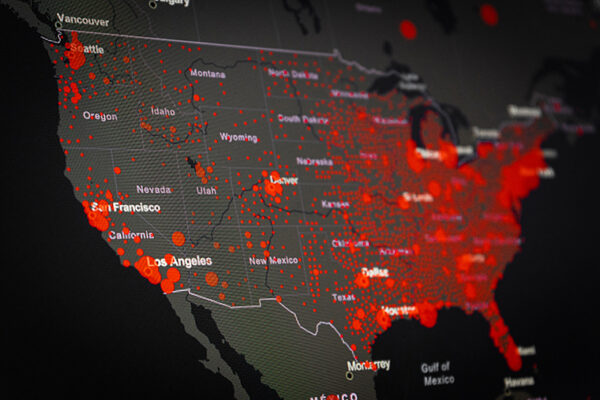Even before COVID-19 and resulting shutdowns created gridlock for some global supply chains, the assortment at many neighborhood supermarkets was dwindling. The cause was not a lack of supply, though, but rather a lack of demand created by a widening income gap in the U.S., according to a new study involving a Washington University in St. Louis researcher.
In a paper forthcoming in Management Science, Raphael Thomadsen, professor of marketing at WashU’s Olin Business School, along with the University of South Carolina’s Rafael Becerril-Arreola and UCLA’s Randolph E. Bucklin find that the amount of variety available in the market is highly sensitive to the income shares of the middle and upper-middle classes.
As the middle class has been hollowed out, the assortment on grocery store shelves has, too, as a result.

“We find that as we become a more unequal society, the total set of products we have to choose from is reduced, holding average level of income constant,” Thomadsen said.
“This happens largely because as income inequality grows, the people whose income is growing do not spend much more at supermarkets. But people whose incomes are cut reduce their spending quite a bit, leaving less total spending and, thus, less support for niche products.”
The researchers looked at the level of income distribution disparity in more than 1,700 U.S. counties between 2007 and 2013, using the Gini income index. A Gini index of zero expresses absolute equality, where everyone has the same income. An index of 1 represents maximum inequality.
Then they overlaid that with a look at the product range available in grocery stores within each county across nearly 950 categories of non-perishable household items.
Consumer packaged goods manufacturers consistently supplied many new products over the time of the study. More than two-thirds of the counties had a widening of income inequality. In those counties — and at individual stores in those counties — the available assortment of products tended to grow 18% slower than in the counties where income inequality narrowed.
By comparison, in the counties where income inequality narrowed, there was typically more product variety added to the shelves.
The researchers also established that the effects of higher inequality on assortment could be explained by changes in the incomes earned by households in the middle class, which they defined, according to U.S. Census Bureau data, as the third and fourth income quintiles (the 40th to 60th income percentiles and the 60th to 80th percentiles, respectively). When middle-class share of income rose, variety went up, but when it fell, variety went down.
“The conventional wisdom is that greater inequality means that we have greater diversity of desires, and that this should increase the number of product offerings in the store. Finding the opposite effect made us think harder about how assortment is driven by income inequality,” Thomadsen said.
“A long-term implication of our results is that consumers’ ability to use food stamps may decline in areas where falling average income and rising income dispersion leads retailers to reduce their assortments and possibly stop participating in the food stamp program.”
Raphael Thomadsen
“A large factor is that consumers spend a smaller percentage of their income at supermarkets as their income rises, since they fulfill their needs at some point, or even move to consumption at restaurants or other options. However, we also see that greater inequality comes from the hollowing out of the middle class, so greater income inequality does not necessarily lead to greater heterogeneity — it leads to a large group of consumers with lower incomes that become more similar to each other.”
The analysis sheds light on the potentially unintended consequences of policy interventions and impact on consumer welfare.
“For example, the U.S. government recently increased the minimum number of offerings per category required for retailers to participate in the food stamp program,” Thomadsen said. “A long-term implication of our results is that consumers’ ability to use food stamps may decline in areas where falling average income and rising income dispersion leads retailers to reduce their assortments and possibly stop participating in the food stamp program.”
Additionally, the increase or decrease in assortment that arises from changes in income distribution can impact consumer welfare. “In particular, consumers who lose access to their preferred items may be most adversely affected,” he said.
Additionally, the findings can help manufacturers understand trends. In particular, adding Gini tracking to one’s operational dashboard may be a useful insight to drive marketing efforts.
“Our results show that markets with rising income inequality experience assortment pruning by the grocery channel and markets with falling inequality see expansion,” the researchers wrote. “With data on local changes in the Gini index, managers may be better able to guide either defensive actions to retain shelf space or offensive actions to acquire it.”



